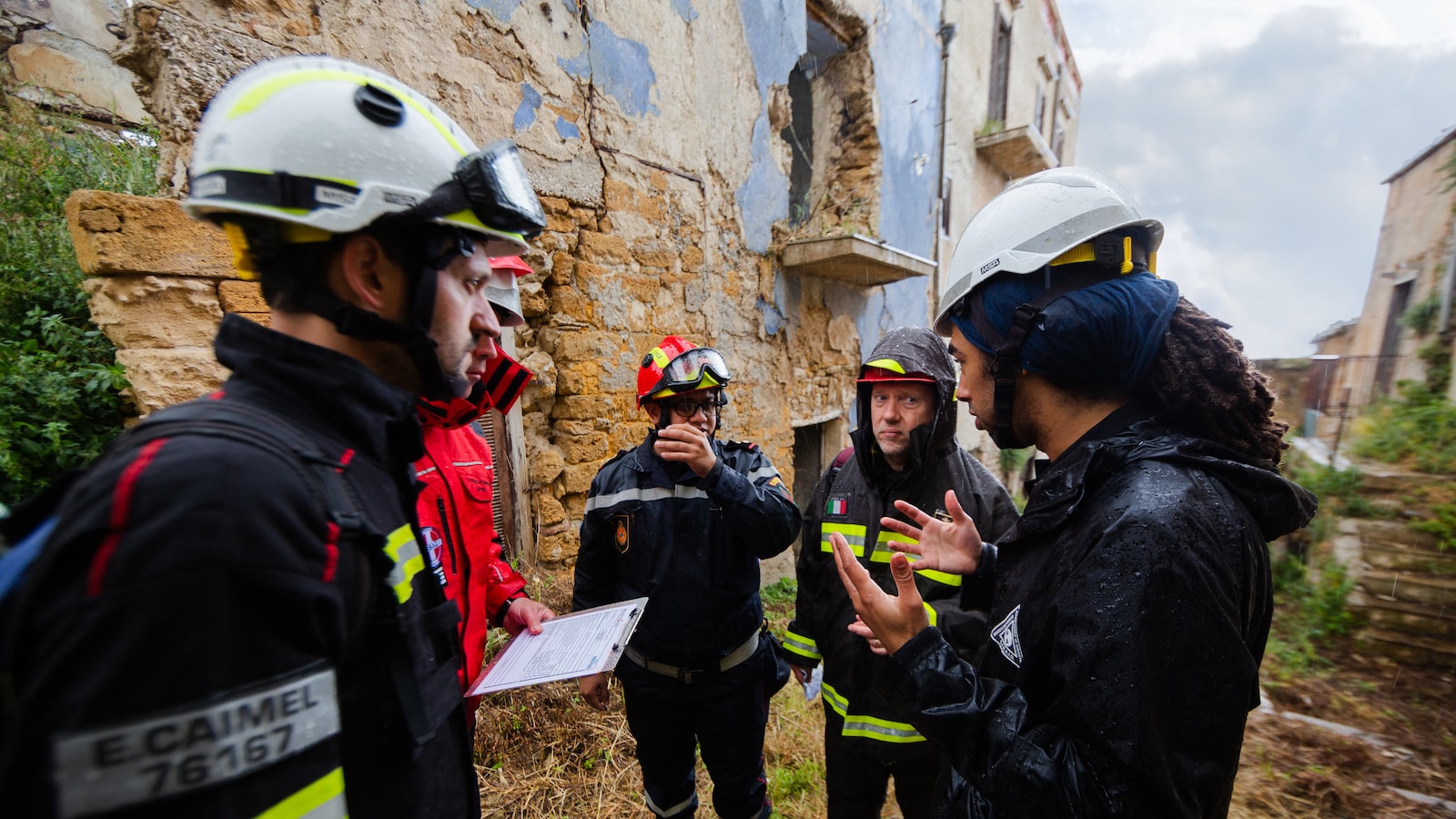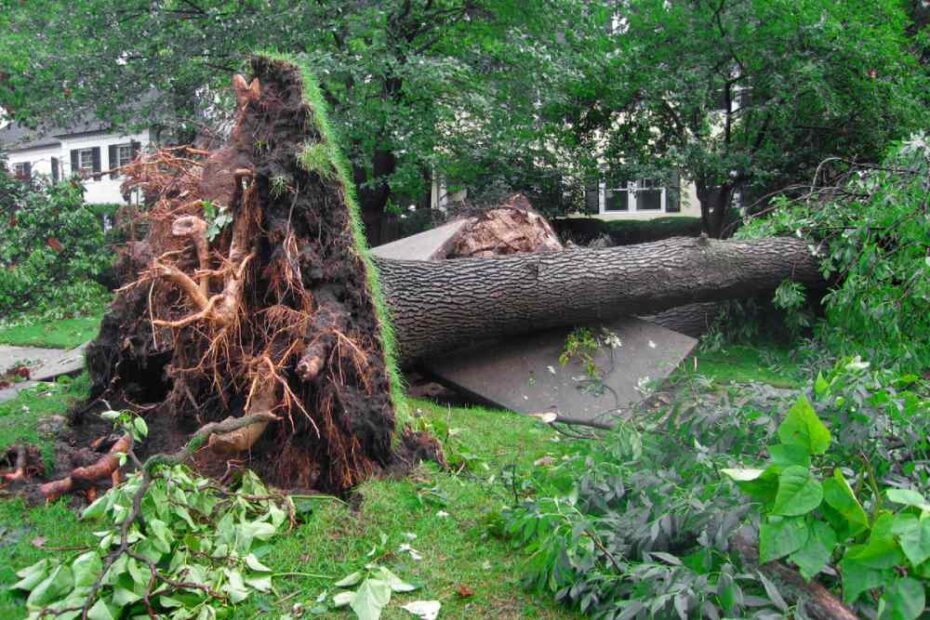As the morning sun gently dapples the forest floor, we often find solace in the sturdy presence of towering trees, their roots firmly anchored in the embrace of the earth. However, nature, with its whimsical ways, occasionally throws a curveball our way, disrupting the tranquility we hold so dear. Ah, the sight of an uprooted tree, lying in a state of bewildered abandonment, its connection to the ground severed, leaves us pondering how to mend such a break in the natural order. But fear not, for in the face of this arboreal conundrum, we shall delve into the realm of arboreal triage, unveiling secrets on how to deal with uprooted trees with ingenuity, grace, and, most importantly, the utmost respect for mother nature. Are you ready, my fellow earthbound explorers, to restore the lost harmony and give these fallen giants a well-deserved second chance? Let us embark on this journey, where we shall learn how to heal, nurture, and rebuild our woodland companions.
Choosing the Right Equipment and Preparing for the Task at Hand
When faced with the task of dealing with an uprooted tree, it is crucial to choose the right equipment and prepare yourself for the challenge that lies ahead. By having the necessary tools and a well-thought-out plan, you can effectively tackle this task and minimize any potential risks or damages.
First and foremost, ensure that you have safety gear such as sturdy gloves, safety glasses, and a hard hat. These will protect you from any potential falling debris or sharp branches. Additionally, you may need the following equipment to efficiently handle the uprooted tree:
- Chainsaw: A reliable chainsaw will make the process of cutting through the thick trunk and branches much easier. Ensure it is properly fueled, and the chain is sharp and well-maintained.
- Rope and pulleys: These come in handy for guiding the direction of the tree’s fall, especially if it is in a precarious position or near structures. Use them strategically to prevent any further damage.
- Shovels and digging tools: If the uprooted tree is still partially buried in the ground, you will need these tools to carefully excavate the roots and safely remove it.
- Wheelbarrow: To efficiently transport heavy branches, logs, or debris to a designated area for disposal or further processing.
Remember, safety should always be your top priority. Assess the risks involved, consult with professionals if necessary, and approach the task with caution. Now, let’s delve into some useful features and tips that can aid you in dealing with an uprooted tree:
| Features/Tips | Description |
|---|---|
| 1. Adequate Preparation | Inspect the surrounding area, identify potential hazards, and plan your approach accordingly. Clear the area of any obstacles or fragile objects that could be damaged during the tree removal process. |
| 2. Teamwork | If the task seems too daunting, consider seeking the assistance of friends, family, or professionals. Having an extra pair of hands can make the job more manageable and safer. |
| 3. Proper Disposal | Ensure you have a plan in place for disposing of the cut branches, logs, and debris. This could include arranging for a waste removal service or utilizing a wood chipper to repurpose the tree waste. |
By selecting the right equipment, preparing adequately, and following these features and tips, you will be well-equipped to handle the task of dealing with an uprooted tree efficiently and safely. Exercise caution, take breaks as needed, and don’t hesitate to seek professional assistance if the situation becomes overwhelming.

Understanding the Structural Damage and Assessing the Tree’s Condition
In the event of an uprooted tree, it is essential to understand the extent of the structural damage and carefully assess the tree’s overall condition before taking any further steps. This will help determine the appropriate course of action to ensure safety and minimize any potential harm to property and individuals in the vicinity.
One way to assess the structural damage is by examining the roots and the extent of their uprooting. If the roots appear severely damaged or disconnected from the ground, it may indicate a higher risk of the tree toppling over. Additionally, inspect the trunk for any visible cracks, wounds, or signs of decay. Pay close attention to the presence of fungi growth or large cavities, as these can compromise the tree’s stability. Consider the angle at which the tree is leaning, as a significant lean may indicate instability and an increased likelihood of falling.
To further evaluate the tree’s condition, consider several features or tips to help guide your decision-making process. Here is a useful table to provide insights:
| Features/Tips | Description |
|---|---|
| 1. Canopy Health | Assess the overall appearance of the tree’s canopy. Look for signs of excessive thinning, dead branches, or loss of leaves, as these may indicate compromised tree health. |
| 2. Soil Condition | Check the condition of the soil surrounding the uprooted tree. Soil that is overly saturated, compacted, or eroded can weaken the tree’s stability and hinder its ability to regrow roots. |
| 3. Tree Species | Consider the specific characteristics of the tree species. Some species are more prone to uprooting or have weaker wood, making them more susceptible to damage. |
By understanding the structural damage and thoroughly assessing the tree’s condition, you can make informed decisions regarding the best course of action. Remember, when dealing with uprooted trees, safety should be the primary concern. Consulting with a professional arborist or local tree service provider can provide valuable expertise and assistance in managing the situation effectively.
Implementing Proper Techniques for Tree Removal and Uprooting
Trees are majestic and play an essential role in our environment, providing shade, oxygen, and beautifying landscapes. However, there may come a time when a tree needs to be removed or uprooted due to various reasons such as disease, damage, or interference with infrastructure. When faced with an uprooted tree, it is crucial to handle the situation carefully and follow proper techniques to ensure safety and effectiveness.
Here are some tips and features to consider when dealing with an uprooted tree:
| Features/Tips | Description |
|---|---|
| Safety First | Always prioritize safety during tree removal. Assess the situation, wear protective gear, and keep bystanders away from the area. |
| Assess the Damage | Inspect the tree to determine the extent of the damage. Consider factors such as the tree’s size, health, angle of uprooting, and proximity to structures or power lines. |
| Hire a Professional | If the uprooted tree poses significant risks or requires specialized equipment, it is advisable to hire a professional tree removal service to ensure the job is done safely and efficiently. |

Restoring the Landscape and Promoting Healthy Tree Growth
Dealing with an uprooted tree can be a challenging task, but with the right knowledge and techniques, you can restore your landscape and promote healthy tree growth. Whether it’s due to a severe storm or the natural aging process, an uprooted tree needs immediate attention to minimize further damage and secure the safety of your surroundings. Here are some tips on how to effectively handle an uprooted tree:
| Features: | Tips: |
|---|---|
| Assess the situation: | Thoroughly examine the tree to determine the extent of its damage and decide if it can be salvaged. Look for any broken branches, exposed roots, or signs of decay. |
| Secure the tree: | Once you’ve assessed the damage, use sturdy ropes or straps to carefully secure the uprooted tree to prevent it from falling further or causing harm. Avoid pulling or tugging on the tree as it may cause additional stress. |
| Replant or remove: | If the uprooted tree is small and the damage is minimal, you may be able to replant it. Dig a new hole, ensuring it is deep and wide enough to accommodate the roots. Otherwise, consult with a professional arborist to safely remove the tree to prevent any hazards. |
By following these guidelines, you can effectively address the issue of an uprooted tree and restore your landscape. Remember, it’s crucial to prioritize safety and seek professional assistance if needed. With proper care and attention, you can promote healthy tree growth and maintain a beautiful and thriving environment.
Frequently Asked Questions
Q: Why did the tree leave its home so abruptly?
A: Ah, the tragic tale of the uprooted tree! This arboreal adventurer sought new horizons and decided to uproot itself, bidding farewell to the familiar ground it once called home.
Q: How can one savior save the uprooted sapling?
A: Fear not, brave interaction! To rescue the uprooted tree, one must gently cradle its exposed roots, ensuring no harm comes to these fragile tendrils of life. By transplanting it into nutrient-rich soil and providing ample water and care, this courageous tree may yet flourish once more.
Q: Can I instill the spirit of belonging back into the displaced tree?
A: Indeed, dear nature enthusiast! The tree’s spirit yearns for a sense of belonging again. You may lend a helping hand in this reclamation process. Surround your arborescent friend with a diverse community of fellow trees, supporting each other’s growth and encouraging unity in their newfound sanctuary. As we wrap up this guide on how to deal with uprooted trees, we hope you’ve gained some valuable insights into this daunting yet surmountable task. Remember, when nature throws a curveball, we too can pivot, adapt, and restore harmony in our surroundings.
Just like the resilient and determined roots of a tree, we must forge ahead with patience and purpose. With proper planning and precautionary measures, you can bring new life to what seems like a disastrous situation.
Let us always be mindful of the marvelous bond we share with these majestic giants. For trees not only provide us with oxygen and shade but also symbolize strength, stability, and endurance. They teach us the invaluable lessons of rootedness, growth, and rebirth.
So, next time you come across an uprooted tree, remember to assess the situation carefully, prioritize safety, and seek assistance if needed. By following the steps outlined in this article, you can minimize further damage and give the fallen tree a chance to flourish anew.
Together, let us nurture our environment and demonstrate our commitment to our natural surroundings. Through our efforts, we can transform what appears as chaos into a harmonious landscape, where uprooted trees become a symbol of resilience and regrowth.
Thank you for joining us on this journey, and may you find solace in the power of nature and the transformative force that lies within each of us. Let’s continue to stand united, one step at a time, towards a greener, more abundant future.
- When to Put Weed and Feed on Lawn in Michigan - October 16, 2023
- When to Fertilize Potatoes Plants - October 16, 2023
- Can You Plant Clover in the Spring - October 16, 2023
Contents

